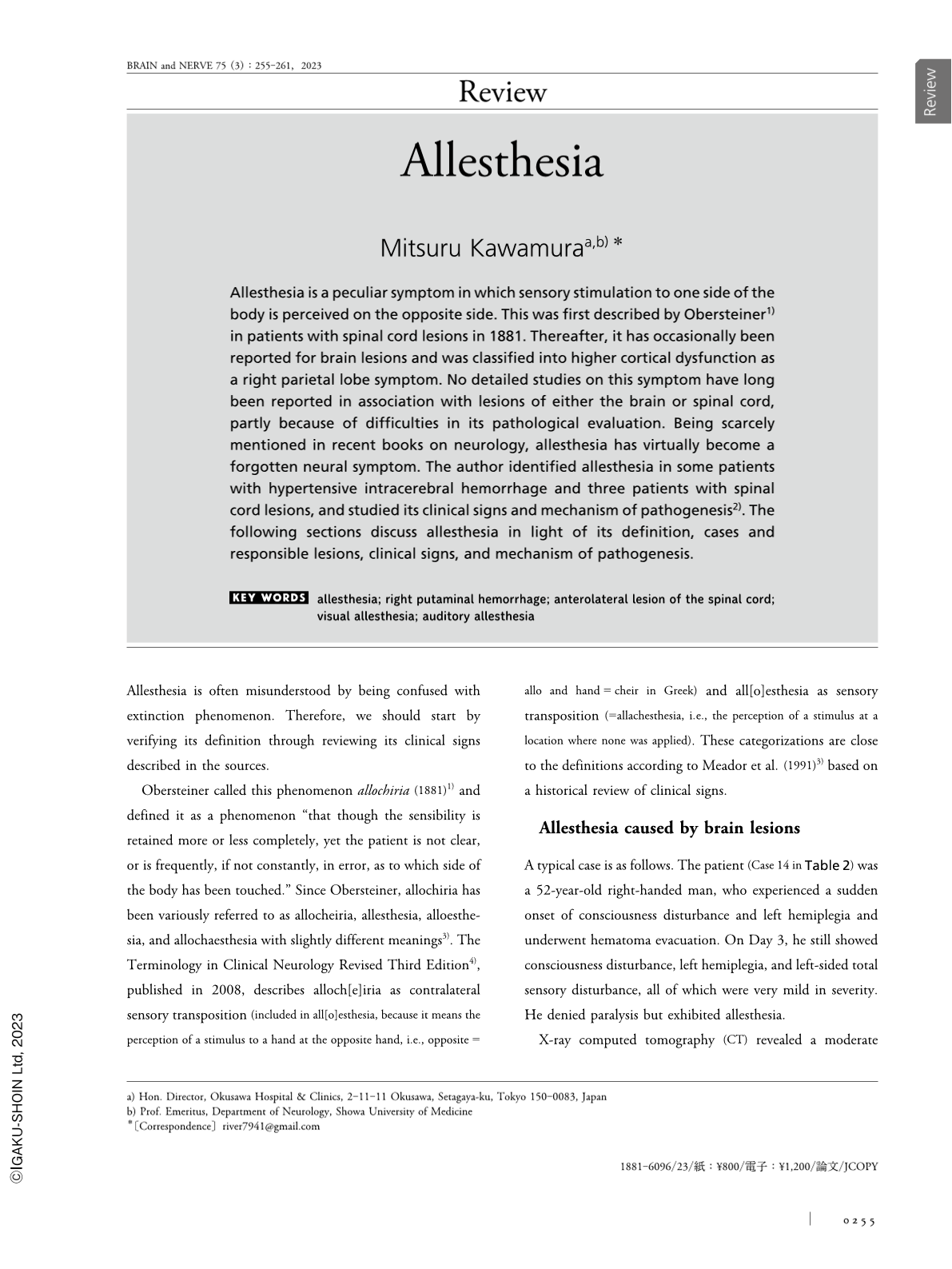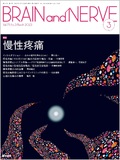Japanese
English
- 有料閲覧
- Abstract 文献概要
- 1ページ目 Look Inside
- 参考文献 Reference
Allesthesia is a peculiar symptom in which sensory stimulation to one side of the body is perceived on the opposite side. This was first described by Obersteiner1) in patients with spinal cord lesions in 1881. Thereafter, it has occasionally been reported for brain lesions and was classified into higher cortical dysfunction as a right parietal lobe symptom. No detailed studies on this symptom have long been reported in association with lesions of either the brain or spinal cord, partly because of difficulties in its pathological evaluation. Being scarcely mentioned in recent books on neurology, allesthesia has virtually become a forgotten neural symptom. The author identified allesthesia in some patients with hypertensive intracerebral hemorrhage and three patients with spinal cord lesions, and studied its clinical signs and mechanism of pathogenesis2). The following sections discuss allesthesia in light of its definition, cases and responsible lesions, clinical signs, and mechanism of pathogenesis.
Allesthesia is a peculiar symptom in which sensory stimulation to one side of the body is perceived on the opposite side. This was first described by Obersteiner1) in patients with spinal cord lesions in 1881. Thereafter, it has occasionally been reported for brain lesions and was classified into higher cortical dysfunction as a right parietal lobe symptom. No detailed studies on this symptom have long been reported in association with lesions of either the brain or spinal cord, partly because of difficulties in its pathological evaluation. Being scarcely mentioned in recent books on neurology, allesthesia has virtually become a forgotten neural symptom. The author identified allesthesia in some patients with hypertensive intracerebral hemorrhage and three patients with spinal cord lesions, and studied its clinical signs and mechanism of pathogenesis2). The following sections discuss allesthesia in light of its definition, cases and responsible lesions, clinical signs, and mechanism of pathogenesis.

Copyright © 2023, Igaku-Shoin Ltd. All rights reserved.


